


Loud, louder, loudest... Let's make some noise! We'd love to hear from you. Write in to us with your suggestions at theindiantrumpet@gmail.com

Every morning, the neighborhood aunt would serve dosas with sambar for breakfast. The whistle of her pressure cooker was the first sound of the day, followed by the enticing aroma of lentils, spices, and more. A classmate on the school bus always brought dosa for lunch; we’d eagerly await the lunch hour, often swapping lunch boxes. Before biting, I’d lick the podi masala (a lentil and spice condiment) off the dosa. Dosa became my go-to meal during college and later university — light on the stomach and easy on the pocket, satisfying both hunger and taste buds. Fast forward to this day, and in my kitchen, I always have dosa batter in the refrigerator. Although I haven’t mastered making the batter from scratch, I’m content with the store-bought version. I can count on the crispy, golden dosa when I crave comfort food. I’m biased; I can eat dosa plain, but I do enjoy it with sambar, a variety of chutneys, a dash of ghee, and a sprinkle of podi.
editor’s note 4 theindiantrumpet.com
As we embarked on preparing this edition, Dosa Special, sitting in Dubai, UAE, I was struck by how little I knew about the vast world of dosa. My experiences with dosa in New Delhi were just the tip of the iceberg, and it was here, among expats from different parts of India, that my curiosity was piqued. What were the differences between Mangalore dosa and Bengaluru dosa? This question ignited a spark of curiosity that led me on a journey of discovery. So, here’s an ode to the thin, savory crepe that continues to captivate hearts and appetites! What is it about the dosa, made with a fermented batter of ground white gram and rice, that makes it so irresistible? Join me as we delve deeper into the world of dosa in the following pages.
We ventured into the world of Neer, Zini, and even Oman chips dosa, each offering a unique taste and texture. We engaged in lively debates about the best accompaniments — coconut chutney, potato bhaji, or sambar, each adding its own distinct flavor to the dish. We read a heartfelt love letter from a chef to the dosa, a testament to its universal appeal. We pondered over the question of which state — Andhra Pradesh, Tamil Nadu, or Karnataka — could truly be called the home of the dosa, each region contributing its own unique style. We also explored our thoughts on fusion dosas, a reflection of the ever-evolving culinary landscape. The conclusion: let’s not call a dosa a desi pancake or a desi crepe — nothing can match the charm of a dosa being called a dosa. Indeed, a lot is in the name — flavors, authenticity, and charm. Let’s celebrate the cultural diversity and regional variations that make dosa a true culinary gem.





Purva Grover
Founder-Editor
Dolly Goel
Art Director
Michael Gomes
Features Head
Samina Amoji
Features Writer
Joaquim Gonsalves
Podcast Producer
Vishal Bheero
Features Writer

Drishtee Johar
Social Media Executive

Rights:
All rights reserved. The writing, artwork and photography contained herein may not be used or reproduced without the express written permission of The Indian Trumpet. The views expressed in the magazine are not necessarily those of The Indian Trumpet. All efforts have been made while compiling the content of the magazine but we assume no responsibility for the effects arising there from. We take no responsibility of the availability of the products mentioned in the various sections of the magazine. Reprints as a whole or in part can be done only with written permission from The Indian Trumpet quoting “The Indian Trumpet magazine” for texts and pictorial material. Signed articles do not necessarily reflect the opinions of the editor. No responsibility can be taken for the loss of unsolicited manuscripts, photographs or artwork.
Contacts:
Purva Grover, founder & editor theindiantrumpet.com
All queries to be addressed to theindiantrumpet@gmail.com
Purva founder-editor editor@theindiantrumpet.com
The Indian Trumpet Magazine is released in quarterly installments, a year. It is available to the readers absolutely free of cost on the portal theindiantrumpet.com.
theindiantrumpet.com .5
HAPPY TOOTING
We’re storytellers, who happen to be on social media. Toot along!

Debut Edition Cover Story

It was our debut edition, and we debated what should go on the cover. We wanted something auspicious and traditional that expressed our story and excitement. And so we thought, what could be better than a ‘nazar battu’ to bring happiness to the readers of UAE’s first and only magazine devoted to India’s color, culture, and chaos?
The Story Behind Our Logo

Ever wondered how our logo came alive? We're excited to share the journey of creating the logo for The Indian Trumpet, a digital magazine from the UAE that celebrates India's vibrant color, rich culture, and chaotic charm


Bollywood Nostalgia

How do we cover Bollywood in The Indian Trumpet? As a magazine that caters to NRIs and Indian expats who crave and miss all things ‘India-yeah,’ we take a nostalgic approach We call our section 70 MM! We hit rewind and visit the classics, talk about the legends, and reminisce about what we miss most about Indian cinema What’s your relationship with Bollywood? How do you celebrate Indian cinema? Tell us in the comments below!

A Trip Down Memory Lane




Let’s revisit the heartfelt words and emotions from the first editor’s note by our founder, Purva Grover, of The Indian Trumpet A magazine that resonates with NRIs and Indian expats who long for and cherish all things ‘India-yeah.’





@theindiantrumpet
6 theindiantrumpet.com

THE ANSWER BEGINS WITH INDIA HERSELF!
Why the jungles of India? Every perspective of India is filled with grandeur, mysticism, and awe, and the Indian wilderness uniquely captures this feeling.
14 OUR SHABDKOSH
THE SURMADANI: A SYMBOL OF LOST HERITAGE
The surmadani remains a symbol of tradition that evokes nostalgia. It is a cultural connection that stirs sentimental attachments and is a cherished relic.
18 INDIAN BELLY
HOW SCHOOL TIFFIN BOXES BRING BACK CHERISHED CHILDHOOD MEMORIES
For many people, these simple, metal food containers will remind them of homemade, comfort meals that were made with love and affectation
TRUMPET LEAD
22 MY DEAREST DOSA
As I sit here, memories of our journey together flood my mind, warming my heart with nostalgia.
24 UP FOR A DESI PANCAKE?
Dubai offers many dosas, including those from Kerala, Tamil Nadu, Karnataka, and Andhra Pradesh
26 IN SOUTH INDIA, THE RECIPES HAVE BEEN PASSED DOWN THROUGH GENERATIONS
Faizan Ali, the Dubai-based culinary expert, shares some top tips on the South Indian delicacy
28 HELLO, FUSION DOSAS
What happened to the classic dosas? We explore the new dosas on the block



10
DESI LIT
follow the noise 8 theindiantrumpet.com
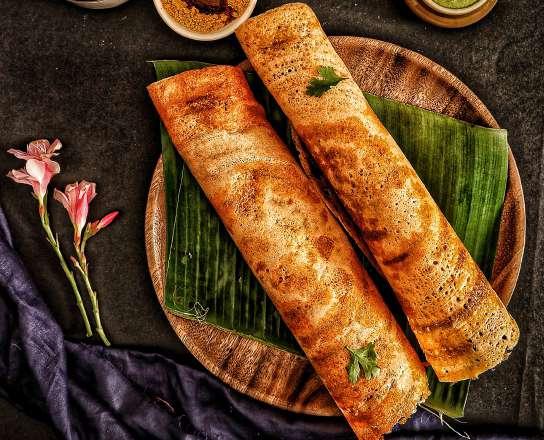


30 THE SWEET TASTE OF SAMBAR FROM BENGALURU
Dubai-based foodie Sreekutty explains the difference between Kerala and Bengaluru dosas
31 WHAT IS AN OMAN CHIPS DOSA?
Featuring the irresistible crunch and bold flavours of Chips Oman!
32 COCONUT CHUTNEY, POTATO
BHAJI & SAMBAR ARE DOSA’S BEST ACCOMPANIMENTS
The dosas at Venus Restaurant in Karama reminds this UAE radio professional of his hometown in India
34 CHITRAHAR
PIANO, THE LATEST NEWCOMER TO INDIAN CLASSICAL MUSIC
Transferring the musical artistry and mystique of Indian ragas to the piano
37 BHARAT DARSHAN
THE LIFE OF A MOCHI UNDER A TREE
A mochi is genuinely Indian in every aspect because he usually sits cross-legged at his work all day
42 IDHAR UDHAR
WHISPERS OF THE RAIN
A rainy day is also the perfect excuse to whip up delicacies in the kitchen. Different varieties of pakoras and steaming hot cups of tea would be relished.
46 DIARY OF AN INDIAN OIL FOR THOUGHT
Five oils on kitchen shelves that can come in handy in everyday rituals
48 LAST WORD
CHUTNEY IS ALWAYS A GOOD IDEA
With spices on our minds, we had a conversation with Executive Chef James Kang, Grand Gourmet, Asiana Grand Hotel, Deira, Dubai.
theindiantrumpet.com .9
The answer begins with India herself!
WHY THE JUNGLES OF INDIA? EVERY PERSPECTIVE OF INDIA IS FILLED WITH GRANDEUR, MYSTICISM, AND AWE, AND THE INDIAN WILDERNESS UNIQUELY CAPTURES THIS FEELING.
words DR RAJUL MATKAR
Lara Morakhia and Siddharth Morakhia are a motherson duo who have traveled extensively over some of the most remote terrains of Africa and Asia. Central to these expeditions, Lara and Siddharth sought to capture and share the beauty of our world’s natural heritage and cultural diversity through artful and intuitive photography. Their travels led them to the creation of the book Jangala — The Mystical Jungles of India. We spoke to them to learn more about their journey into the wild.
What inspired you to work together on this book?
We enjoy traveling across India and experiencing the various facets of culture and diversity that are waiting to be discovered. After the global pandemic, we were left with a sense of emptiness with our urban lifestyle and sought to reconnect with nature. We have always been interested in wildlife because these moments are deeply gratifying— it is not easy to track big animals, and finding them after hours, if not days, is extremely rewarding. Furthermore, in the presence of such creatures — especially in the wild— there is something authentic to experience: we witness primal behavior, see and feel all emotions, and realize we share this planet with some genuinely incredible life forms. We wanted to share this adventure and feeling as best
we could with as many people as possible — hence, we compiled Jangala - The Mystical Jungles of India with our library of photos and moments captured over the years.
Why the jungles of India?
The answer begins with India herself. As a place, India presents a highly unique experience through various lenses — be it culture, sights, and even cuisine. Every perspective of India is filled with grandeur, mysticism, and awe. The Indian wilderness captures this feeling in a very unique way. India’s wildlife holds a magical array of biodiversity in the cover of mesmeric and dense jungles. For instance, the wilderness across India is home to four out of the five taxonomical Panthers (the lion, leopard, snow leopard, and tiger), the clouded leopard, elephants, sloth bears, monkeys, and an even more extensive population of raptors and colorful birds.
Furthermore, the shifts in landscape are equally as dramatic as one can find serene forests on the edges of Himalayan mountains, deserts, and lush farmland. Interestingly, this particular slice of India tends to fly under the radar vis-a-vis a more “conventional” view of a crowded and chaotic India. A journey across the Indian wilderness is refreshingly peaceful, and we often find ourselves in a
10 theindiantrumpet.com desi lit


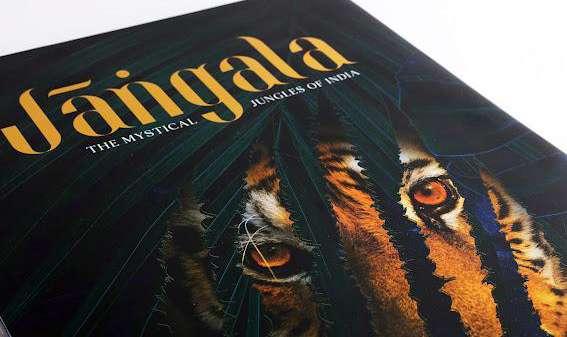
theindiantrumpet.com .11


space where our perception of time differs from what we are used to in our everyday lives. In short, we wanted to capture this natural beauty and inspire others to embark on a similar journey to experience this unique part of the world.
Tell a story that touched you the most on these trips. The honest answer is that every moment related to being in the wilderness was unique, and selecting just one vignette as the most touching would be unfair. One particularly unique aspect of the Indian wilderness is the mythology and remnants of human culture that
complement every adventure. For instance, it’s common to see the occasional shrine or ruins of a temple dotted around various forests. Furthermore, certain birds and animals have mythological or spiritual connections. For example, the Greater Coucal is a bird that local tribes in central India believe holds a specific type of supernatural power. This bird is often seen as a harbinger of a big cat sighting in some Indian forests. Indeed, we took this to heart, and although doubtful at first, we were excited every time we spotted this bird. While the results were not scientific, we did see this bird moments before we saw the melanistic leopard in Kabini for the first time — after many failed attempts! Since then, this bird has become a good luck charm for us!
12 theindiantrumpet.com desi lit

What challenges did you face in bringing together this book?
Naturally, shortlisting pictures from our extensive library was tricky as we felt we had many print-worthy shots that deserved to be included! Producing the book in the middle of the pandemic, however, was the main challenge. The sporadic in-person hours meant we completed most of our work remotely, which required meticulous coordination with designers, and as a result, timelines were stretched. Given the quality we were committed to, we refused to cut corners on the finished product and slowed down to produce the best result. At the outset, we were focused on creating a book that met the highest international standards and could do justice to the grandeur of our subject matter: the Indian wilderness. We brought forward a piece of work that captures this sense of awe.
Why a coffee table book and not any other small book?
The large-scale format captures the majesty and awe of the Indian wilderness. Seeing these pictures through a phone screen or small-format book does not convey


emotion and feeling compared to seeing birds, animals, and wild colors in person. We wanted to replicate that feeling; a large format was the only way.
Tell us a little about the magnificent animals.
The moment one locks eyes with a wild tiger is incredibly special. Without any protective cover of the glass, we realize that, as humans, we have entered a different domain — one where we are not necessarily the most powerful. These animals do not hide their emotions; we can instantly see aggression, fear, tentativeness, and even power. They wear no masks and bear their personalities for all to see. Witnessing these emotions unfiltered is captivating — we lose sense of time in the presence of feelings so pure and natural. Any moment with these animals could very well be our last. There are no guarantees in the wild, and each sighting could be the continuation of a series of shared experiences or, just as quickly, the final moments together. As such, every sighting is unique and develops into a core memory. It is something we hope everyone can experience at least once. We hope Jangala awakens your desire to explore the wild!

Dr. Rajul Matkar is an obstetrician and gynecologist with 34 years of experience in practice in India. She has been working in Dubai for the last 14 years. She’s always had a keen interest in educating people. She has conducted numerous awareness camps for women’s health, osteoporosis, menopause, cancer of the cervix and breast, as well as nutrition and gut health in Mumbai and Dubai. She runs an annual Breast Cancer Awareness event, Pink Cooking Challenge, every October. Over the last nine years, she has been on a food journey and continues spreading awareness of the importance of recognising and eating healthy food to her patients and teenagers. She blogs about food, beauty, and lifestyle on Instagram, @rajul_25.
theindiantrumpet.com .13
The surmadani: a symbol of lost heritage
THE SURMADANI REMAINS A SYMBOL OF TRADITION THAT EVOKES NOSTALGIA. IT IS A CULTURAL CONNECTION THAT STIRS SENTIMENTAL ATTACHMENTS AND IS A CHERISHED RELIC.
words SAMINA NAMOJI

Long before the advent of dressing tables in Indian households, people often used portable handheld mirrors or jharokhas to groom and beautify themselves. The wooden jharokha, with its intricate designs, or nakshi as it was usually called, featured shutters, which, when opened, revealed a mirror. It also housed the grooming essentials such as combs, scissors, bindis, etc. The one in my mum’s room displayed her favorite Tibet Cream and the surmadani. The surmadani, a kohl or kajal container, is a small, ornate, designed vessel crafted from brass, silver, or other metals. Its prime purpose is to store and protect kohl, a traditional eye cosmetic made from powdered stibnite or other natural ingredients. It also served as a testament to the customs and traditions woven into daily lives and
our shabdkosh 14 theindiantrumpet.com
passed down through generations harboring a sense of continuity within families.
For us as children, the sheer regality of the surmadani was enough to catch our attention. We would watch mesmerized as my mother or granny delicately scooped out a little of the surma, applied it to the inner corner of their eyes with a glass stick, deftly closed their eyes, and then swiftly glided the stick to create a striking black line. And lo! Behold, they had the most captivating kohllined eyes.
Often, I would muster enough courage and ask my mum to apply surma in my eyes, only to become terrified and flee right at the final moment! Nevertheless, my elder siblings courageously endured this tricky task and would often get their eyes adorned by a hawker outside our neighborhood mosque. He showcased an array of tiny bottles in his little dilapidated tokri alongside the vibrantly colored attars. Once the prayers were done, people would flock to him to get their eyes decked. His slender fingers held all the magic as he effortlessly and skillfully completed the process within a few minutes.
In the past, the surmadani was significant in the bridal trousseau, along with the clothes and other gifts bestowed upon the bride. Apart from being a part of the beauty regime, the surma was believed to be a protective agent, shielding the eyes from the heat and glare of the sun and avoiding eye infections and conjunctivitis. As the woman transitioned into motherhood, it further protected babies from malicious forces where a small dot of the black liquid was applied on the forehead or the cheek, which acted as a nazar battu
The surma’s origins can be traced back to 3500 BC when it originated in ancient Egypt and the mysterious kingdom of Punt, located on the Horn of Africa. Notable

theindiantrumpet.com .15

our shabdkosh 16 theindiantrumpet.com


figures like Cleopatra, pharaohs, noblewomen, and nomadic groups like the Toureg and Bedouins were known to adorn surmas around their eyes.
Derived from galena eye paint and later termed kohl in Arabic from the Akkadian word for the cosmetic, this substance was made from a natural mineral form of lead sulfide. As depicted in the ancient texts, its application is described as the upper eyelids being adorned in black while the lower lids are colored green (using malachite). In the centuries-old Bharatanatyam dances, the dancers apply heavy kohl to their eyes to draw attention to their eye gestures and movements. Actresses from the Golden era of Bollywood, like Sharmila Tagore, paired her iconic bouffant hairstyle with the winged eyeliner that looked undeniably stylish and left an indelible mark on the audience. The daring use of kohl also trickled into Hollywood, where actors like Charlie Chaplin wore it for a “comical effect’’ in his movie “The Tramp” and in 1972, Mick Jagger made his audience swoon as he wore kohl and rocked the glamour look.
The process of creating surma kohl is inherently

fascinating. My grandmother followed this method and kept the homemade kohl in glass bottles. A small diya, usually made of clay or steel, was filled with good-quality castor oil and lit. It was then placed in the middle of two bricks. Next, a thick steel plate was placed over the bricks, ensuring the flame’s end touched the plate. As we waited patiently for 40 to 50 minutes, enough soot would have been collected on the plate. Then, using a pair of tongs, my granny would carefully remove the plate and let it cool. Then, she would take a clean knife and scrap the soot onto a plate or a bowl. It was mixed with enough ghee or almond oil to make it a smooth paste. This was now transferred to the glass bottle, which was all ready to be used.
Despite the evolution of modern beauty practices and cosmetic advancements, the surmadani remains a symbol of tradition that evokes nostalgia. It serves as a cultural connection that stirs sentimental attachments and is a cherished relic, preserving the essence of ancient grooming rituals and as a tangible link to our rich cultural past.
Samina Namoji was born in Karnataka India, and brought up in the UAE. She is currently residing in Muscat, Oman. She is the classic example of a third-culture child. She has a degree in BSc. A homemaker, published poetess, and an author — her favorite genre is horror and she has written many short stories in this category. A creative soul by nature she also dabbles in DIY, painting, calligraphy, and home decor.
theindiantrumpet.com .17
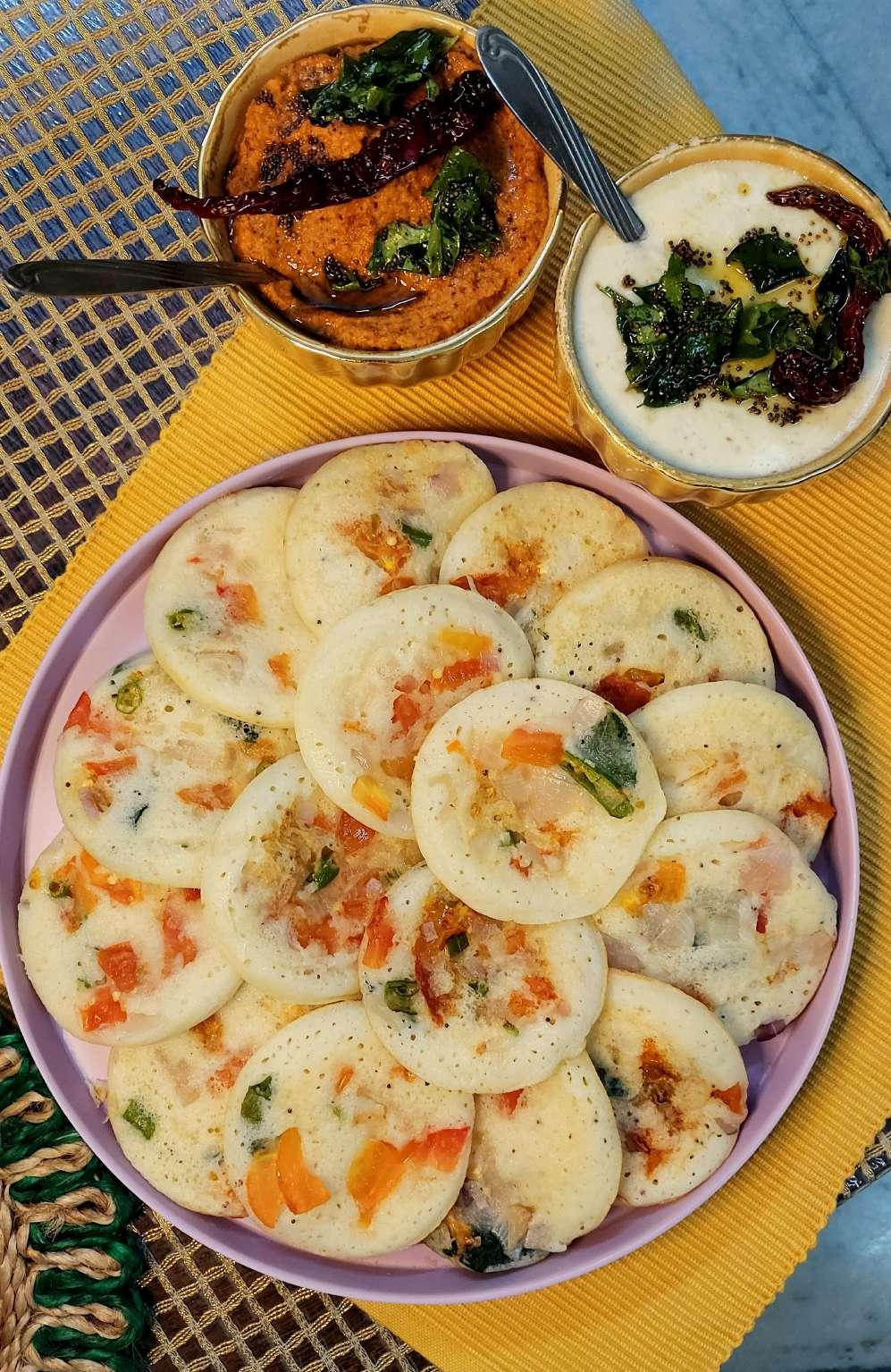

18 theindiantrumpet.com indian belly

HOW SCHOOL TIFFIN BOXES BRING BACK
CHERISHED CHILDHOOD MEMORIES
FOR MANY PEOPLE, THESE SIMPLE, METAL FOOD CONTAINERS WILL REMIND THEM OF HOMEMADE, COMFORT MEALS THAT WERE MADE WITH LOVE AND AFFECTATION
words DRISHTEE JOHAR
theindiantrumpet.com .19
In the colorful tapestry of childhood memories in India, few things hold a place as dear as the humble tiffin box. These small, metal containers filled with scrumptious homemade delights were essential to every Indian kid’s daily school routine. From aromas that make you droll to comforting tastes, these tiffin staples have left an indelible mark on the hearts of generations.
The tiffin staples of Indian children were a treasure trove of flavors and memories. Each dish carried the love and care of the parents, who prepared them with utmost dedication. These tiffin treats satisfied hunger and brought joy and a sense of connection with home during school hours.
As we look back on those simple yet delightful school days, we can’t help but smile at the nostalgia and the flavors that still linger on our taste buds, reminding us of the cherished moments of our childhood.
Here are some homemade treats that we carried to school in our tiffin boxes:
Paratha Rolls: Parathas, an unleavened flatbread, is a staple in Indian households. In the 1970s, Paratha Rolls were a hit among schoolchildren. These stuffed parathas, filled with spiced potatoes, paneer, or even leftover vegetables, were a delightful and satisfying treat that brought joy to lunchtime. The aroma of the parathas and the smiles they brought to faces still linger in the hearts

of those who relished them.
Aloo Poori: Another favorite tiffin dish was Aloo Poori - a soft, fluffy, deep-fried flatbread with spicy potato curry. This lip-smacking combination was a heartwarming reminder of the love and care that went into preparing each tiffin box. The spices’ fragrance and the potato curry taste would transport children back to the warmth of their homes.
Idli-Sambhar: Originating from South India, Idli-Sambhar was an absolute delight for tiffin enthusiasts. Soft, steamed rice cakes and a tangy lentil-based soup –Sambhar – were a nutritious yet flavorsome combination. The light, fluffy Idlis combined with spicy Sambhar made it a wholesome meal that energized children throughout the day.
Cheese and Tomato Sandwich: As Western influences started to creep into Indian cuisine, cheese, and tomato sandwiches found their way into tiffin boxes. Simple yet delicious, these sandwiches filled with grated cheese, sliced tomatoes, and a hint of black pepper added a touch of international flavors to school lunch breaks.
Fruit Chaat: Fruit Chaat was a popular and healthy option to balance the indulgence of the main course. Chopped seasonal fruits tossed with a tangy blend of spices, chaat masala, and a sprinkle of lemon juice made this tiffin staple both refreshing and nutritious.
Drishtee Johar is pursuing a B.A. in Journalism and Communications at Cardiff University. She enjoys photography and video editing. She also likes to cook, and as a high school student, she published a few recipes on a YouTube cooking channel and even designed a cookbook.
20 theindiantrumpet.com indian belly



trumpet lead 22 theindiantrumpet.com

My Dearest Dosa,
As I sit here, memories of our journey together flood my mind, warming my heart with nostalgia. How intricately you are woven into the rich tapestry of Kerala’s culinary heritage.
You are more than just a dish; you’re a cherished tradition crafted from the fermented batter of ground white gram and rice; your thin, savory crepe delights palates far and wide.
Yet, even as we revel in your delicious offerings, we must remember to enjoy you in moderation, for your high rice content demands such restraint. But fear not, for your fermentation process imbues you with essential amino acids, making you delicious and nutritious.
Our love for you extends beyond mere appreciation; it’s a cultural affair, a ritual. I remember the bustling mornings in my hometown, where families gathered to enjoy your crispy goodness. You’re not just a dish but a centerpiece of our meals, bringing loved ones together to celebrate our heritage.
And what sets you apart are your accompaniments—the vibrant chutneys and curries. From the fiery red coconut chutney to the tangy tamarind sambar, each condiment adds its unique flair, creating a symphony of flavors.
And let’s remember the variety you offer. Whether it’s the classic masala dosa, generously stuffed with spiced potatoes, or the paper-thin neer dosa, delicately crafted with rice batter, you cater to every palate and preference.
But you hold a more profound significance for me beyond the culinary delights. You’re a symbol of our hospitality, our love for good food, and our connection to our roots. We honor our traditions with every bite, paying homage to the flavors that define us.
So, here’s to you, my beloved Dosa, a symbol of South Indian culinary prowess, a taste of home, and a reminder of the simple joys that enrich our lives.
With all my love and appreciation,
Chef Babuji Panicker, Grand Millennium Business Bay, Dubai

theindiantrumpet.com .23

UP FOR A DESI PANCAKE?
DUBAI OFFERS MANY DOSAS, INCLUDING THOSE FROM KERALA, TAMIL NADU, KARNATAKA, AND ANDHRA PRADESH
words VISHAL BHEEROO
24 theindiantrumpet.com trumpet lead

The very sight of a dosa triggers nostalgic memories for many Indian expats. Some fondly remember our days as students when we bonded over this affordable but yummy South Indian dish. As we took bites of this desi pancake, we discussed politics or shared other friendly conversations.
However, this dish is not exclusive to India alone. Talk about a dosa, and you are bound to find at least one joint serving this delicacy in most parts of the world, especially in Dubai, where there is a large Indian expat population, hence an abundance of choices. But did you know that no two states in India serve the same version of a dosa? Each region has its unique version, accompanied by its signature chutneys and sambars.
Dubai offers many dosas, including those from Kerala, Tamil Nadu, Karnataka, and Andhra Pradesh. Here are some unique varieties that you can gorge on.
Neer Dosa
You would have encountered this mouth-melting specialty if you were familiar with cuisine from the Udipi or Mangalore region in Karnataka. Neer means water in Tulu (Mangalore/Udipi dialect), and Neer Dosa means water dosa. This thin and light dosa is made of rice batter and is easy to digest due to its soft consistency and oil-free cooking process. Neer Dosa is a healthy option and is cherished by fans of South Indian cuisine. It is featured on the menu cards of several Asian restaurants in Dubai. For the Mangalorean community, preparing this dosa during celebrations is a must. Check out the Neer Dosas at Hari Prasad Pure Veg Restaurant in Dubai.
Zini Dosa
There is something unique about the delectable Zini or Jinni Dosa. For us, it is the presentation. The dosa is cut into strips and rolled like Japanese Sushi. This dish is perfect for an evening tea session or even dinner, stuffed with mixed veggies, cooked in a red, spicy sauce, and topped with cheese. Try the Zinis at Mavalli Tiffin Room (MTR) Bur Dubai; they serve a lip-smacking one!
Burj Khalifa Dosa
This presentation takes dosas to a very ‘high’ level, much like the Burj Khalifa in Dubai. It doesn’t matter if you cannot reach the ‘At The Top’ of the world’s tallest tower; at least you can take a bite of this iconic landmark, the Burj Khalifa Dosa. This 50-cm tall, four-layered, and triple-flavored dosa presents three distinct flavors. It is a unique variety; portion-wise, it is large enough to feed three hungry stomachs. Feast on this excellent preparation at Yummy Dosa in Al Karama.
Dosa Grande
Don’t get fooled by its French title. It’s just a humble Family Roast dosa, as desi as it gets! However, some foodies have taken to Instagram and given it a French title, calling it Dosa Grande. We guess the grand size of this dosa inspired them to rename this dish. Due to its sheer size, the Dosa Grande has gained popularity in the UAE. This delicacy is served on a 4.5-foot-long tray and requires two skilled chefs to prepare. Head to Saarangaa Bhojan Shala at Bur Dubai or Dubai Marina to feast on this extravagant variety, and make sure you are not alone at the table.

Vishal Bheero wears many hats between writing, curating content, and doing PR briefs for clients. He is torn between the love of two cities, and calls himself a Pumbaikar (Read: Pune and Mumbai). India-based, he whips an Indian story, and loves his food platter whether it’s a dosa, pani puri or chole, blowing the Trumpet piping hot. He can be tangy sweet or salty, like his Indian stories a la Hindi movies sauce. He still hasn’t lost hope of becoming a book author and has an acting bug hidden in his closet, still making faces in front of the mirror when no one is watching. And, love Shaikh-Land from a distance, for remove the Mum from the Bai you get Du..Bai. Also, he loves yoga!
theindiantrumpet.com .25

IN SOUTH INDIA, THE RECIPES HAVE BEEN PASSED DOWN THROUGH GENERATIONS
FAIZAN ALI, THE DUBAI-BASED CULINARY EXPERT, SHARES SOME TOP TIPS ON THE SOUTH INDIAN DELICACY
words MICHAEL GOMES
26 theindiantrumpet.com trumpet lead

Dosas are a staple in southern India, but they are slowly becoming a favorite among residents and visitors in Dubai. You can have this wholesome dish for breakfast, lunch, evening tea, or even dinner. A dosa is good enough for a quick bite. Have it with a bowl of tangy sambar or some spicy chutney, and you’ll relish the experience. Chef Faizan Ali tells us why this delicacy is so popular. He is the head chef at Khyber, an Indian eatery in Dukes The Palm, Dubai.
What are some of the different dosa fillings you can suggest?
You can use a variety of fillings and tailor them to your taste. Traditionally, masala dosas are stuffed with a potato or mixed vegetable preparation. However, these days, there are variations like egg dosa, paneer dosa, cheese dosa, noodles dosa, chicken curry dosa, ghee dosa, Szechwan dosa, chicken tikka dosa, palak dosa, methi dosa, mutton kheema dosa, and even chocolate dosa.
Why are dosas served in South Indian states tastier than those in cities like Dubai, Delhi, or Mumbai?
In South India, the dosas taste better due to traditional preparation methods. The dish is accompanied by sambar and chutney, made from freshly ground spices specific to the region. The recipes used in South India have been passed down through the generations, so the taste is authentic.


What’s the difference between dosas served at thattukadas (street food stalls in Kerala) and five-star restaurants?
Dishes served in street-side joints are affordable and economical for the general public. Still, it’s important to note that hygiene standards may not match those of fivestar hotels where food is prepared under strict hygienic conditions.
If you have unexpected guests at home, how do you prepare dosa in less than 10 minutes?
Making dosas at home can be challenging if you don’t have the necessary ingredients readily available. But if you don’t have dosa batter, you could always prepare alternatives like rava dosa or ragi dosa.
How is Dubai different from the dosas in taste and texture from those in India?
It’s similar, but you may notice a slight difference in taste and quality due to the ingredients, climate, water, and shelf life. In India, the flavor is based on the spices that are grown.
Where in India have you tasted the best dosas?
For me, it’s Bengaluru. The restaurants at M.G. Road serve some of the tastiest dosas; those are at the top of my list for this dish.
Michael Gomes is a veteran journalist with vast expertise on several topics. His specialties range from grub to music and everything in between, as well as interviews with celebrities from Bollywood and Hollywood. When he’s not typing stories, he chops away in the kitchen or plays his favorite tunes on the guitar.
theindiantrumpet.com .27
HELLO, FUSION DOSAS
WHAT HAPPENED TO THE CLASSIC DOSAS? WE EXPLORE THE NEW DOSAS ON THE BLOCK
words MICHAEL
GOMES
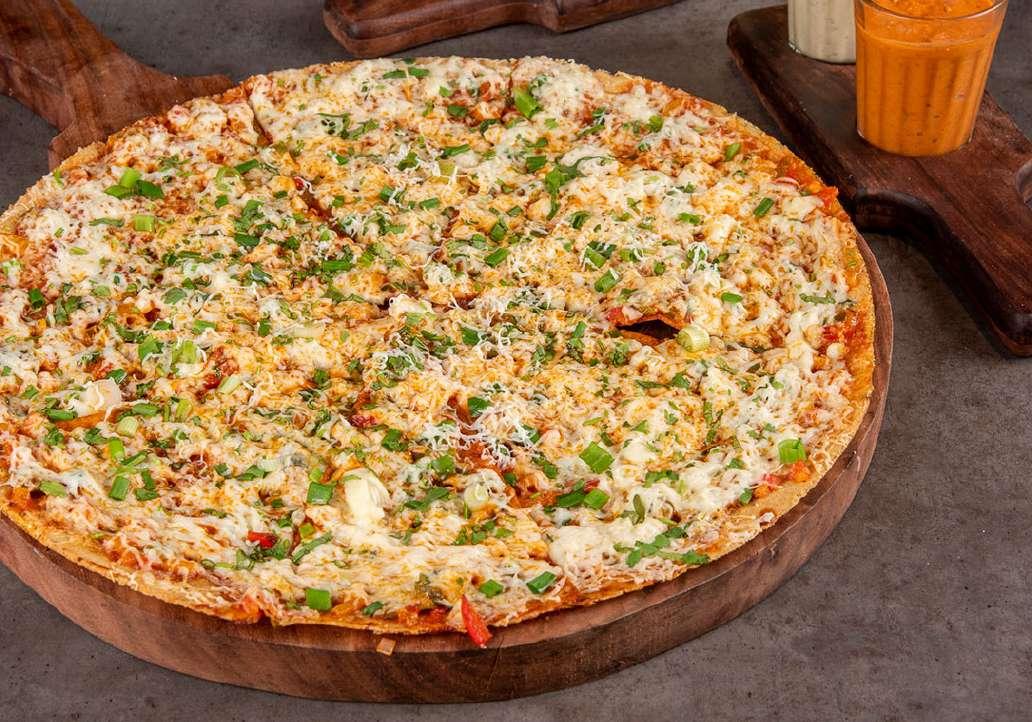


 Open Cheese Pizza Dosa
Chilli Cheese Dosa
Jugal Parekh
Open Cheese Pizza Dosa
Chilli Cheese Dosa
Jugal Parekh
28 theindiantrumpet.com trumpet lead
Zini Dosa

Schezwan chopsuey Dosa
Jugal Parekh of Yummy Dosa explains why varieties like Open Cheese Pizza Dosa, Zini Dosa, and some other innovative recipes are becoming a hit with foodies in Dubai.
Tell us about a few unique fusion dosas you serve at your restaurant. Can you also give us a brief description and the inspiration behind each?
We have quite a few varieties. Here are some of the top ones.
Open Cheese Pizza Dosa: This fusion variety is infused with veggies, rich pizza sauce, and abundant cheese. It offers pizza enthusiasts an exciting way to enjoy their favorite flavors while preserving the dosa experience. We were inspired to combine two beloved dishes to create something new and delicious.
Chili Cheese Dosa: Inspired by the all-time favorite Chilli Cheese Toast sandwich, popular on Mumbai’s streets, we infused the same zesty, cheesy goodness into a dosa. This fusion brings the beloved taste of Chilli Cheese Toast onto your dosa plate, creating a savory delicacy.
Chopsuey Schezwan Dosa: This dish was inspired by the vibrant and bold flavors of Indo-Chinese cuisine. The idea was to blend the saucy, spicy, and savoury elements of Chopsuey and Schezwan with the versatile and crispy dosa.

Zini Dosa: This specialty is inspired by the vibrant streets of Mumbai. The Zini Dosa offers an explosion of spicy flavors. A generous serving of cheese is piled on assorted veggies, giving the dosa a perfect blend while making it crunchy. Ghatkopar’s Khau Galli inspires this dosa in Mumbai. We aimed to bring something unique to the world of fusion dosas.
Should dosas be ‘fusion-used’ as we love the authentic preparation and some of the varieties are sacrilegious?
Food can be considered art. The world of food is an everevolving canvas. There are no limits to creativity. Fusion dosas allow us to explore new flavors and combinations. Some dosas are indeed sacrosanct, and we leave them as they are. But fusion dosas deliver a unique experience and taste that can be explored beyond limits.
Some fusion dosas are interesting, like the Chips Oman or Manchurian one. Why are they famous?
An increasing number of food enthusiasts are relishing the fusion of diverse flavors. While these dishes don’t strictly adhere to traditional dosa recipes, they undeniably offer a unique flavor, which is why they have a dedicated following. Dosas are versatile, and fusion dosas provide a delightful opportunity for foodies looking to explore the boundaries of taste.
Michael Gomes is a veteran journalist with vast expertise on several topics. His specialties range from grub to music and everything in between, as well as interviews with celebrities from Bollywood and Hollywood. When he’s not typing stories, he chops away in the kitchen or plays his favourite tunes on the guitar.
theindiantrumpet.com .29
THE SWEET TASTE OF SAMBAR FROM BENGALURU
DUBAI-BASED
FOODIE SREEKUTTY EXPLAINS THE DIFFERENCE BETWEEN KERALA AND BENGALURU DOSAS

Dubai-based Sreekutty hails from Thrissur in Kerala. A food lover, she has hosted a TV show in Dubai called ‘Aroma.’ She is also a singer and music mentor. Sree grew up in Bahrain and studied in Bengaluru and Kochi. An avid traveler, she has tried dosas from different places in South India. Here, she explains how the variety changes in texture, appearance, and flavor according to the region.
“In Kerala, Ghee Roast and Masala Dosa are popular. They are thin, papery, and light. The sambar in our region is a bit thick, spicy, and loaded with veggies. But Bharat Hotel in Thrissur serves a different sambar; their preparation is pumpkin-based.” According to Sree, Thattu Dosas are extremely popular in the state capital, Thiruvananthapuram. “They are thicker and prepared live at roadside eateries. These dosas are served with rasavadas and papadums, a combination that foodies swear by.”
She also recommends the dosas in Bengaluru. “They have legendary establishments like MTR and Vidyarthi Bhavan that serve crispy and tasty varieties. “Many places don’t even provide sambar; a yummy white or green chutney is all you need to devour these crispy Bengaluru dosas,” advises Sree. Sree is a huge fan of the sambar served with vada, dosa, and idlis at Bengaluru eateries. “It is sweeter compared to their Kerala counterparts. I love it,” she says.
30 theindiantrumpet.com trumpet lead
WHAT IS AN OMAN CHIPS DOSA?
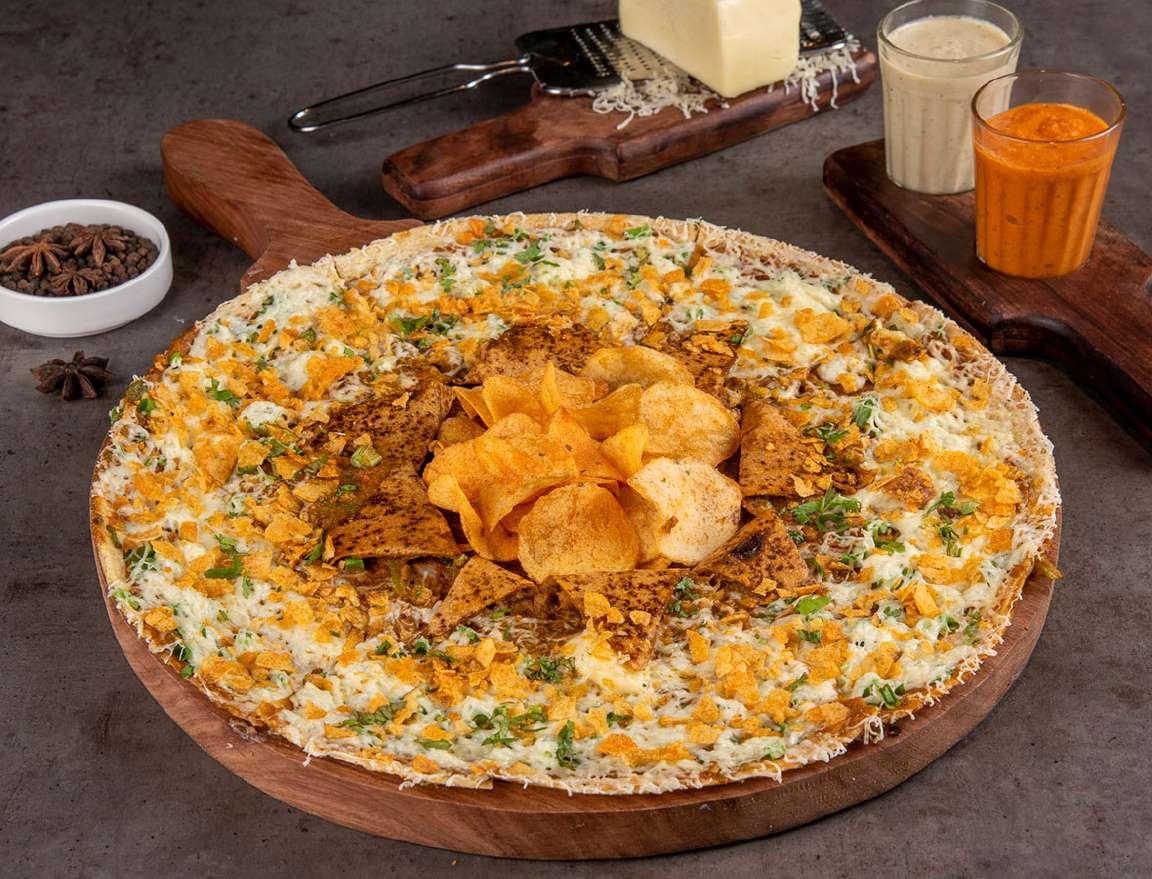
“This fusion dosa incorporates refreshing mint chutney and veggies and is topped with Chips Oman. The beloved staple of the UAE inspires it. The idea behind this fusion dish was to feature the irresistible crunch and bold flavors of Chips Oman in the traditional dosa.”
Jugal Parekh, Yummy Dosa, Dubai
theindiantrumpet.com .31
COCONUT CHUTNEY, POTATO BHAJI & SAMBAR ARE DOSA’S BEST ACCOMPANIMENTS
THE DOSAS AT VENUS RESTAURANT IN KARAMA REMINDS ERROL GONSALVES, A UAE RADIO PROFESSIONAL, OF HIS HOMETOWN IN INDIA


UAE-based radio professional and programming producer (Talk 100.3) Errol Gonsalves, who hails from Karnataka, has tried some of the top dosas in the country. Here’s what he has to say.
“I hail from the Udupi-Mangalore region. My favorite is the Masala Dosas in Udipi due to its distinct taste and aroma. Coconut chutney, potato bhaji, and sambar are the best accompaniments for the dosa. We usually have a dosa in the morning, followed by a cup of steaming hot tea or filter coffee.”
According to Gonsalves, the Masala Dosas served at the Triveni Hotel in Udupi are unique. “It’s the biggest ones you could get in the region. One Masala Dosa should easily suffice four to five people.” Other specialties Gonsalves recommends are Ghee Dosa, Rava (semolina) Dosa, Mysore Masala Dosa, and Onion Dosa.
His favorite dosa place in Dubai is Venus Restaurant in Karama. “The dosas here taste just like the ones in my hometown because the restaurant’s owners are from Udipi. I believe the chef is from there as well,” concludes Gonsalves.
32 theindiantrumpet.com trumpet lead

PIANO, THE LATEST NEWCOMER TO INDIAN CLASSICAL MUSIC
TRANSFERRING THE MUSICAL ARTISTRY AND MYSTIQUE OF INDIAN RĀGAS TO THE PIANO


Can the piano be used to perform an Indian rāga? Of course, the sitar, sarangi, and sarod can be, but the piano? In the past decade, the unique and centuriesold musical genre of Hindustani rāgas has seen the slightly surprising development of being championed by pianists. This particular trend has seen the piano used to play classical rāgas – not as a crossover or fusion or cross-fertilisation of musical genres – but simply as a new instrument for the established but living genre, adding its colors and idioms to an already rich tapestry of sounds.
One such example is the book How to Play Indian Sitar
Rāgas on a Piano by British composer John Pitts, first published in 2016. Designed to make Indian classical music widely accessible to pianists for the first time, it features a collection of 24 rāgas composed within a traditional Hindustani rāga genre – involving a careful blend of pre-composed material with improvisation — one for each hour of night and day, sunset to sunset, encompassing a wide array of moods, and based on over twenty fascinating scales.
Performance traditions for Indian rāgas are primarily passed down orally and involve heavily rehearsed improvisation. In contrast, pianists mostly learn their
words TEAM TRUMPET BLOWERS
34 theindiantrumpet.com chitrahar

craft using notated sheet music — the usual medium for European classical music — so making Indian music penetrable to pianists involves some breaking of traditional European molds.
To perform a specific rāga, the musician must first know its main melodic ‘catch-phrases’ (the pakad) that give it its distinct identity and emotional character and the processes and techniques by which those musical ideas can be gradually unveiled and revealed and expanded and explored over each of the several possible sections of a typical rāga performance. The artistry lies in how skilfully, inventively, and movingly that gradual revealing can be achieved and how smoothly the emotional and dramatic narrative of the performance builds to a wonderfully exciting climax. So, the notated music in the book leads pianists into improvisation almost immediately. In the opening free pulse ālāp section of

each rāga, there is a page of music including a fleshedout version of the rāga’s ‘catch-phrases’ and step-by-step instructions for the pianist to learn how to expand and develop them over several minutes. Similar notation and instructions guide the pianist through optional jor and jhālā sections and slow, medium, and fast gat sections, with multiple rhythmic variations and decorative patterns (tān and tihāī) to try out.
There’s a good reason why the piano is a latecomer to Indian classical music. The distinguishing features of rāgas include mīnd (sliding between notes), śruti (microtonal tuning), and gamma (glides, shakes, vibrato, etc.), and many of those little bits between the notes are as important as the fixed notes themselves. Like any instrument with fixed pitches, the piano can’t play the notes in between. But take out those ingredients, and what are we left with? Remarkably, we discovered a considerable amount. The processes for revealing and developing the pakad are nearly all still there, and the emotional journey is colored differently but intact. Rāgas played on the santoor (the ancient Indian hammered dulcimer) might be a good comparison – where the instrument’s idiomatic colors and decorations and techniques bring something unique to the table, even if they don’t ‘replace’ or entirely compensate for the loss of the pitches between the notes. It transpires that the idiomatic sounds, colors, and techniques of the piano, with its vast array of emotional expression and textural variety, are an excellent vehicle for exploring (and further developing) Indian Classical Music. John has also written Indian Rāgas for Piano Made Easy. You can learn more on the website, pianoraga.com, and look for musical examples can on YouTube.

theindiantrumpet.com .35
The Junior Trumpe T

Are you a young artist with a passion for creativity? We want to celebrate your talent and showcase your artworks in the upcoming issues of The Junior Trumpet! Whether you’re into painting, illustration, digital art, photography, or any other visual expression, we invite you to submit your masterpieces for consideration. Email your submission and bio (including your name, age, class, and school) to [editor@theindiantrumpet.com]






h A pp Y Too T in G
Ar T WA ll
We’re storytellers who happen to be on social media. Toot along! LinkedIn, Facebook and Instagram: @theindiantrumpet theindiantrumpet.com THEINDIANTRUMPET.COM BATUL MUFADDAL VOHRA GEMS OUR OWN ENGLISH HIGH SCHOOL, SHARJAH — GIRLS ISSUE ONE JANUARY 2024 Unleash
creativity,
let your art tell your story. theindiantrumpet.com the junior trumpet 19
your
and

THE LIFE OF A MOCHI UNDER A TREE
A MOCHI IS GENUINELY INDIAN IN EVERY ASPECT BECAUSE HE USUALLY SITS CROSS-LEGGED AT HIS WORK ALL DAY
words PHALGUNN MAHARISHI
theindiantrumpet.com .37 bharat darshan
India has widely differing cultures, practices, traditions, values, and beliefs. When venturing down a street in any part of India, two eyes cannot take in the vernacular sights. One of which will be among a voice calling out loudly: “Polish! Polish!”, “Shoe Repair! Shoe Repair!”
Yes! It’s the cobbler, better known by the desi name ‘mochi.’ He can be found sitting under a tree, repairing shoes and sandals no matter what, rain or shine. All he has for shelter is the tree itself.
Trees have always been part and parcel of our existence. They’re tied into almost every age-old story, including our origins on Earth. The Buddha is said to have achieved Enlightenment under the Bodhi tree.
The Banyan tree takes its name from the word ‘Banya,’ meaning ‘merchant.’ Business was frequently carried out under the tree’s sheltering branches, shaded from the harsh and scorching sun. The poverty of the commoner led to trade under the trees.
In villages, the mochi is essential in repairing shoes and sandals. Shoe stretchers, shoe stands, hammers, nails, needles, thread, wax, glue, dubbin, and a variety of brushes are the items that constitute his simple workstation. These tools are spread across thick, dusty rugs, with shoe molds hanging on nails rammed into the tree trunk. A mochi is genuinely Indian in every aspect because he usually sits crosslegged at his work all day. He never cares about the dirt that permeates his body and clothing as he beats the leather into shape: this is his livelihood.
Devaraj, a mochi who usually sits under a mayflower tree on the main street of a posh locality in Mysore, always reports to his workstation punctually despite his hunchback. The locals say they’ve never seen him failing to keep his date with the tree. Devraj stoically describes his hardships: “I came to Mysore twenty years ago from a nearby village to earn my living when I was just fifteen. I work hard days and nights without noticing the heat or cold.” Unfortunately, according to Devraj, the work of a mochi these days doesn’t involve
“When I started to pen down the story, A Bigger Place With More Feet, a story of a cobbler, in my debut book, The Trees Told Me So, who left his home in the village to earn not just a living, but amass a fortune in the city; I wasn’t certain if I was equipped to write one. The readers have loved this tale of love, life, loss, wealth, and struggle. My urge to know if I’d done justice to the buckles, slippers, scissors, glue, cuts, velcro, and straps led to a recent conversation with a cobbler in New Delhi. Under a tree, as he stitched my broken chappal, I told him about this tale from The Trees Told Me So. He heard with rap attention. It had rained that morning, and he’d made a makeshift roof with a few plastic bags. The smile, the wrinkles; it all melted my heart. I showed him a copy of the book, and he flipped through it, not understanding a word. We both knew it was in English, a language alien to him. When I was leaving, he said, “Click a picture of me with it.” The tale is now as much his — as is mine and yours.”
— Purva Grover, author, The Trees Told Me So & Founder-Editor, The Indian Trumpet
bharat darshan 38 theindiantrumpet.com


theindiantrumpet.com .39

It’s thus wisely said that “The shoemaker’s children are often shoeless.”
manufacturing shoes anymore; their primary business has taken a lateral shift towards polishing shoes and repairing them.
Another mochi, Ram Prasad, shares his experience as he works: “I’ve been sitting under this tree and plying my trade here for the past ten years. I have to manage the seasons with a plastic sheet overhead. Ants are running up the tree trunk behind me, and traffic across the road is hefty, but I continue working.”
The mochi is usually paid very little, next to nothing, for his services. The highest amount asked is around Rs. 30-50 to repair a badly damaged sandal. It’s very difficult even to meet the most basic life needs from a mochi’s wage, especially with more advanced lifestyles in this technological era. It’s thus wisely said that “The
shoemaker’s children are often shoeless.”
Ram Prasad continues: “I learned how to make and repair shoes from my father. With factory-made molded footwear becoming more popular, opportunities for mochi work have declined. Previously, we made each part of the shoe or slipper separately and then assembled them on the last. Now it’s more about patching up some part made by a machine”. He also mentions that footwear used to be mostly made of leather with wooden heels; now, it’s all about lightweight materials like cork and plastic.
Making money as a mochi in India is hard: they pocket around Rs. 100 on a busy day. Devraj hopes the government will do something to help: “Even a small shed for us to work in would be welcome.”
bharat darshan 40 theindiantrumpet.com

Devraj, now 65, with his children happily married and settled, doesn’t depend on them and takes pride in his skills. There’s even a zing in his voice as he goes about his work! His workplace cubicle is simple and humble but wide open so the public can spot him easily. His shop is simple but very organized. He has uncomfortable seating and won’t leave his cubicle for regular breaks, as he might miss potential customers. He repairs shoes with fundamental equipment. His shop has few automatic machines: he relies on his legs, hands, and eyes. He has an excellent habit of recycling old shoes and reselling them after minor repairs. He specializes in fixing leather slippers, polishing shoes, mending bags, etc.

In the old days, big trees like the neem, banyan, peepal, or sheesham provided the mochi with the beautiful shelter to carry out his work. However, the modernization of cities and villages has resulted in tree-cutting to make way for road widening. Now, the wealthy have millionrupee homes, and the mochi hardly has any business: the rich don’t approach him.
Hassin, another mochi, believes God provides him with his daily bread. What more could he ask for? He comments, “As long as I have a cup of chai, I’m content. When it rains, I go home, but I’m not happy at heart. I only feel at peace when I am back at my seat under the tree.”
Phalgunn Maharishi holds an MBA in Media & Entertainment from Bharathidasan University and is pursuing a Master’s in Visual Anthropology, Media, and Documentary Practices at the University of Münster in Germany. As part of his master’s program, Phalgunn has produced several documentary films and written research papers driven by his interest in digital media, fan culture, and people in the digital realm. Passionate about music, Phalgunn has also published over 50 royalty-free instrumental tracks and released singles on major streaming platforms.
theindiantrumpet.com .41

Whispers of the rain
A RAINY DAY WOULD ALSO BE THE PERFECT EXCUSE TO WHIP UP DELICACIES IN THE KITCHEN. DIFFERENT VARIETIES OF PAKORAS WOULD BE RELISHED, ALONG WITH STEAMING HOT CUPS OF TEA.
words SAMINA NAMOJI
Rain is one of Mother Nature’s most precious gifts bestowed upon us. It’s a time to slow down, calm the chaos of everyday mundane life, rewind, and appreciate the world around us. The earth undergoes an intense transformation, painting different hues as nature’s canvas is refreshed and rejuvenated! And our own Bollywood has glorified the rain with numerous songs and dances, be it the sizzling tip tip barsa pani or the charming romance portrayed under an umbrella in pyaar hua iqraar hua.
Rainy days often evoke nostalgia, but the memories closest to my heart are of my childhood. With our schools closing for the summer holidays, we would return to our homeland just in time for the June-July Indian monsoons. It was quite a stark contrast as we left behind the hot and humid desert land of UAE and would be welcomed by the blissfully cool showers of India.

idhar udhar 42 theindiantrumpet.com

theindiantrumpet.com .43

We would then travel from Bombay (as it was called back then) in our old but very spacious Ambassador car. I sometimes still wonder how it could accommodate so much luggage and people equally! As our car chugged along the Ghats of Lonavala, we were treated to a picturesque scenery with the rhythmic pitter-patter of raindrops on the rooftop of our car and the magical tapestry of nature. It was truly a feast for the eyes. And, of course, the drive was incomplete without boxes of assorted chikkis and numerous photo sessions in the scenic Ghat. To this day, our photo albums contain those beautiful photos that have been carefully preserved.
Once we reached our hometown, it was our routine to

wait for the bhutta wala, who would ring the bell as soon as he entered our neighborhood. The corn, roasted over hot coals, would then be rubbed with lemon and dusted lightly with chili powder. We polished this off in seconds! The evenings would signal the arrival of the haath gadi walas selling roasted peanuts. As they pushed their carts, we would gather around them excitedly. They would carefully measure, weigh, and then place the salted hot peanuts in our bowls, which we would hold out eagerly. Rushing back home, we ate it with jaggery under the watchful eyes of my granny lest we kids overate!
The monsoons were also the times when crabs would be
44 theindiantrumpet.com idhar udhar


in season. While my nani cleaned the fresh catch I would sit on a small stool and keep her company, listening to her stories. Then, it was cooked over a slow fire in a clay pot and served with jowar rotis. A rainy day would also be the perfect excuse to whip up delicacies in the kitchen. Different varieties of pakoras would be relished, along with steaming hot cups of tea. The ladies of the house would fret every time it poured and try to devise innovative solutions to dry the damp clothes. For us kids,

the showers meant making paper boats and sailing them in the nearby puddles, catching tiny fishes and frogs that would become ‘our pets’ for a couple of days. Power cuts were quite frequent and common. We cousins would huddle up and narrate ghost stories in the dim light of the lantern, and each story would be wilder than the first. Oh! what fun it was. Those simple joys of life are irreplaceable and uniquely evoke many feelings even today!
Samina Namoji was born in Karnataka, India, and raised in the UAE. She is currently residing in Muscat, Oman. She is the classic example of a third-culture child. She has a BSc degree. A homemaker, published poetess, and author, her favorite genre is horror, and she has written many short stories in this genre. A creative soul by nature, she also dabbles in DIY, painting, calligraphy, and home decor.
theindiantrumpet.com .45
Oil for thought

FIVE OILS ON KITCHEN SHELVES THAT CAN COME IN HANDY IN EVERYDAY RITUALS
diary of an indian 46 theindiantrumpet.com
words KALUMBE EBASILA

Oils, especially those found in Indian homes’ kitchens, can be used in various ways to promote mental and physical well-being. We look at five favorites and their benefits.
Coconut Oil: This is one of the most popular and versatile oils used to rejuvenate the inside and outside of the body. Not only is it great for cooking, but it’s also renowned for its exceptional skin and hair benefits. Using coconut oil for self-massage is incredibly refreshing during summer as it cools, nourishes, and hydrates your skin, keeping it soft and supple and helping to counterbalance heat and humidity. Opt for organic coconut oil to benefit from its richness in Vitamin E and antioxidants, which work wonders for your skin and hair. It can help prevent wrinkles and sagging, reduce acne scars, and treat dry, flaky skin. Moreover, it is a fantastic carrier oil for aromatherapy or stronger essential oils like lavender, rosemary, and neem.
Sesame Oil: Enriched with powerful antioxidants, sesame oil is an ideal base for various Ayurvedic skin treatments. The oil helps reverse skin damage caused by free radicals and UV exposure. It’s beneficial in controlling skin damage, sunspots, fine lines, tanning, and hyperpigmentation caused by UV rays. Moreover, sesame oil can reduce inflammation in joints and muscles when used for body massage, relieving pain and restoring mobility.


Almond Oil: Almond oil has a lightweight texture that effortlessly seeps into your skin. It has a sweet and pleasant fragrance but keeps your skin moisturised and glowing. Its benefits include its anti-inflammatory properties, making it practical for conditions like dermatitis and eczema. It also promotes hair growth, restores shine and soothe tired muscles.
Castor Oil: With its anti-inflammatory properties, castor oil is widely used in Ayurvedic treatments for body pain, arthritis, and other bone-related conditions. Castor oil is denser and takes time to be absorbed, making it great for a more extended massage session to soothe any affected areas effectively. It also aids in healing minor wounds and bruises while relieving sunburn and acne-prone skin. Massaging with castor oil also helps increase lymphocytes in the body, contributing positively to the immune system.
Neem Oil: With excellent antibacterial and antifungal properties, neem oil effectively targets skin conditions like acne, fungal infections, moles, and warts. Dilute it with a carrier oil, such as coconut or jojoba oil, before applying it to the skin to avoid irritation. This will maximize its benefits and help eliminate free radicals, promoting detoxification. To optimize the advantages, Ayurvedic herbs like hibiscus for thickening, Amalaki for hair growth, bhringraj for antimicrobial properties, and Brahmi for protection can be infused into the oil.
Kalumbe Ebasila is the Spa Head Trainer at Urban Company, Dubai.
theindiantrumpet.com .47
CHUTNEY IS ALWAYS A GOOD IDEA

With spices on our minds, we had a conversation with Executive Chef James Kang, Grand Gourmet, Asiana Grand Hotel, Deira, Dubai. We started with the obvious, asking him what his advice would be to someone attempting to cook Indian food for the first time! “Don’t be overconfident about bold flavors. Go slow. Yes, Indian flavors can be quite overpowering, but that’s what makes them so delicious,” he said.
Chutney, can you simplify it? Making chutneys is a tedious process, but there are ways to simplify them, and they’d still be delicious and full of flavor. For example, the Onion Chutney we serve is a quick two-step process; we slice and sauté the onions in a skillet with some red chilies, set them aside to cool, then blend them into a smooth paste with some tamarind and sugar. We also have a delicious mint chutney that comes together in five minutes. All the ingredients are tossed together,

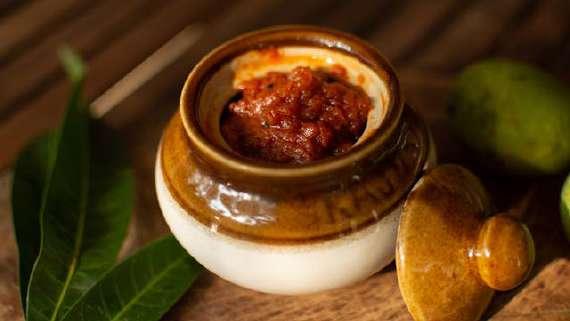

seasoned generously, and blended into a chutney-like consistency.
Chutney, the all-rounder? Chutney goes well with most things, but obviously, nothing beats pairing it with chaats, dosa, and idly, as well as main dishes such as biryani and pulao. We serve multi-national cuisines. However, we usually see our guests enjoying chutney with almost everything from our buffet, and you’d be surprised to see just how well a good chutney can complement most savory dishes of any cuisine!
Pappadum, Pickle, and Chutney: What is your take on this ‘trio’? The beauty of these three items is that they can be eaten with almost everything, as they make for excellent flavor enhancers. Add them as a side to any main dish, such as biryani, top them over paratha, or have them on their own as a yummy snack or palette cleanser between courses.
Executive Chef James Kang with his team at Grand Gourmet
last word 48 theindiantrumpet.com

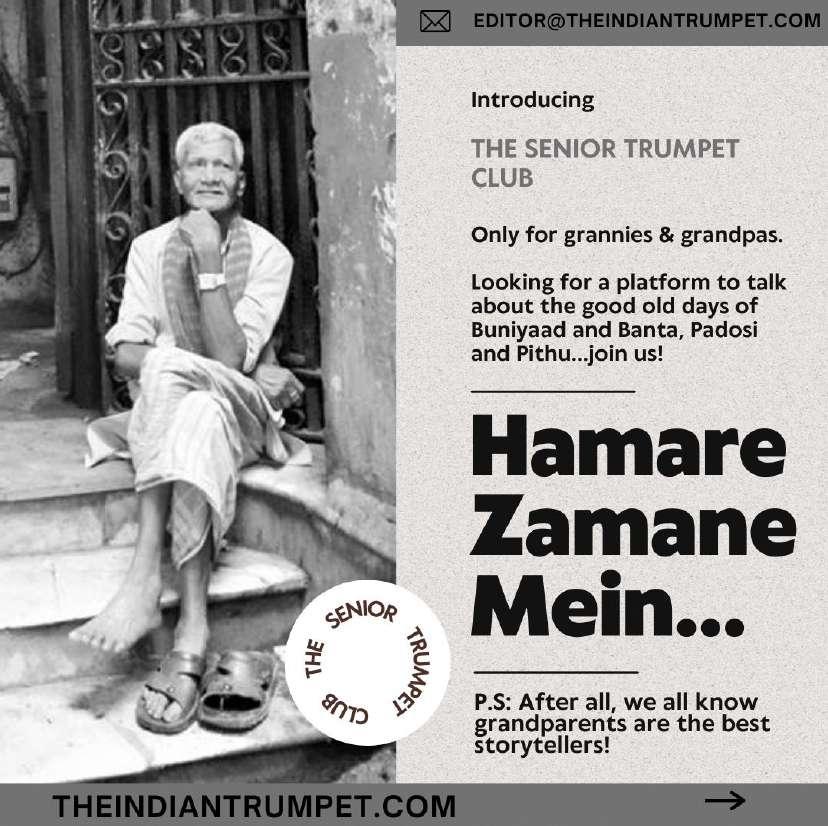






















































 Open Cheese Pizza Dosa
Chilli Cheese Dosa
Jugal Parekh
Open Cheese Pizza Dosa
Chilli Cheese Dosa
Jugal Parekh










































